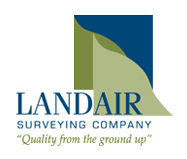A 3D laser survey can save you thousands – just ask America’s busiest airport.
When the time came to remove and renovate the existing underground baggage conveyor system in America’s busiest airport, the action never stopped.
The contractor hired for the renovation had a seemingly impossible task: build a new conveyor system while the old one was still in operation. No matter what, the luggage movers had to keep going.
Together, the contractor and a team of laser surveyors spent seven days scanning the site with high-speed scanners. They worked at night, when airport traffic was lightest, and when the final registered point cloud was compared to the proposed 3D model of the new conveyor system, critical clashes were detected.
By uncovering the interferences early, the contractor saved thousands in construction and re-manufacturing dollars.
Click here for the full case study.
High-definition scanning is changing the construction, architecture and engineering industries. The beauty of laser scanning is its ability to gather detailed data that the client doesn’t even know they need at the time, but will prove useful down the road.
In addition to being incredibly precise, scans can be used to produce point clouds, digital color photos, survey-quality files, computer models and videos from the scans of multiples views. You can insert animation or virtual buildings, roads and people to show proposed areas; or insert design drawings from BIM to check for clash or interference.
And once the site is scanned and processed, anyone – from analysts to engineers – can access it anytime. All you need to check and recheck engineering quality data is a desktop computer.
The cost savings of avoiding reconstruction and re-engineering far outweigh the cost of the scan itself. And, as with most things, isn’t it cheaper to get it right the first time?
###
Tate Jones has over 40 years of experience in land and aerial surveying and was one of the country’s earliest adopters of 3D laser scanning technology. A nationally recognized expert in the field of 3D data capture, he has worked with hundreds of clients in the engineering, architectural and construction industries. Contact him at tjones@3DLaserSurveys.com or visit www.3DLaserSurveys.com.

